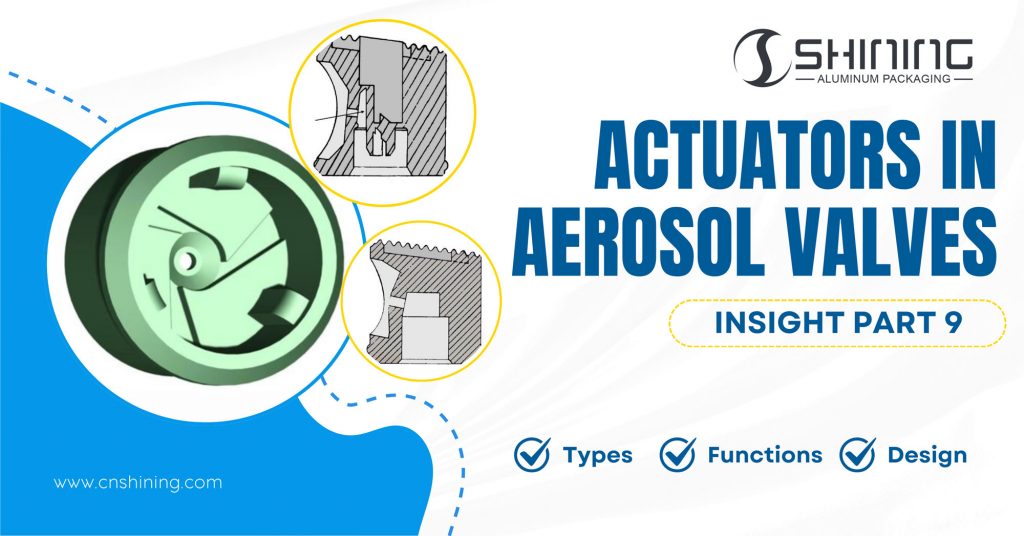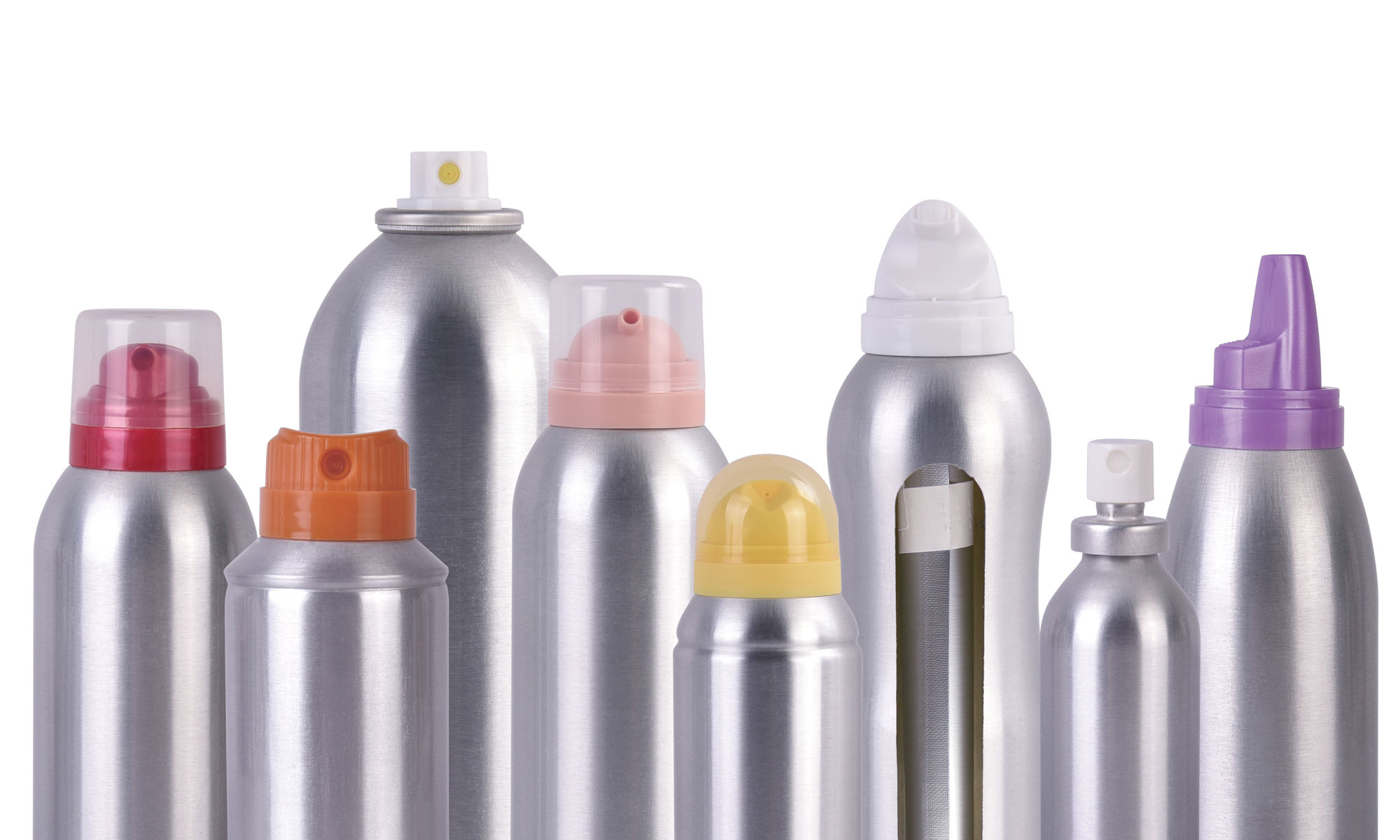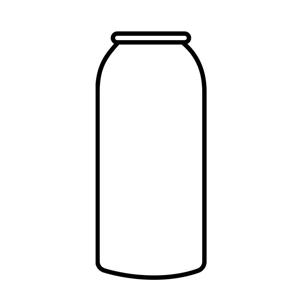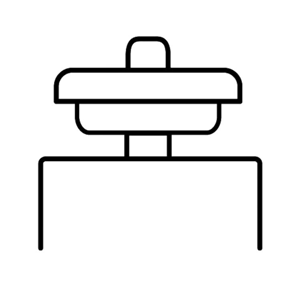소개
액추에이터는 제품이 어떻게 그리고 어디에서 분배되는지 제어하는 에어로졸 밸브의 구성 요소로, 종종 사용자 경험을 결정합니다. 스프레이 패턴 사용자 정의 에게 재료 내구성, 액추에이터는 에어로졸 기술에서 중요한 역할을 합니다. 액추에이터의 유형, 특히 기계적 분리(MBU) 및 비기계적 분리(비-MBU) 시스템을 이해하면 제조업체와 공급업체가 최적의 기능과 안정성을 갖춘 제품을 제공하는 데 도움이 될 수 있습니다. 아래에서 액추에이터의 복잡한 기능과 설계 고려 사항을 자세히 살펴보고 이러한 구성 요소가 특정 애플리케이션에 맞게 조정되는 방식에 대한 통찰력을 제공합니다. 구매자이든 업계 전문가이든 이 가이드는 액추에이터 선택 및 사용자 정의에 대한 실행 가능한 지식을 제공합니다.
에어로졸 밸브의 액추에이터란 무엇인가?
에어로졸 밸브에서 액추에이터는 사용자가 제품을 방출하기 위해 누르거나 기울이는 부분입니다. 간단해 보일 수 있지만 액추에이터는 조절에 필수적입니다. 스프레이 흐름, 패턴 및 일관성. 광범위하게 말해서 액추에이터는 두 가지 범주로 나뉩니다.
- 기계적 분리(MBU) 액추에이터: 내부 소용돌이 챔버가 장착된 MBU는 제품이 밸브를 빠져나갈 때 분해합니다. 이는 더 미세한 분무를 생성하여 화장품 및 공기 청정제에 이상적이며, 제어된 미스트 또는 물방울 크기가 중요합니다.
- 비기계식 분리(비-MBU) 액추에이터: 설계가 간단한 비-MBU는 직접적인 제품 흐름을 허용하여 스트림과 같은 스프레이를 생성합니다. 이는 살충제와 같이 직접적이고 농축된 스프레이가 필요한 제품에 적합합니다.
MBU와 비 MBU 액추에이터의 차이점을 이해하면 제조업체는 제품 기능과 사용자 경험에 효과적으로 맞는 설계를 선택할 수 있습니다.
스프레이 패턴에 대한 사용자 정의
스프레이 패턴 사용자 정의는 액추에이터의 주요 기능 중 하나입니다. 이는 구멍의 크기와 모양을 조정하거나 액추에이터 설계를 변경하여 흐름 방향을 변경하는 등 다양한 방법을 통해 달성됩니다. 일부 고급 액추에이터 설계는 다음을 특징으로 합니다. 다중 구멍 시스템 사용자가 스프레이 패턴을 바꿔 사용할 수 있어 제품의 다양성이 향상되었습니다.
예를 들어, 좁은 원뿔이 있는 액추에이터는 살충제에 적합한 장거리 스프레이를 생성합니다. 한편, 광각 스프레이 패턴은 더 넓은 영역을 커버하는 실내 청정제에 사용될 수 있습니다. 스프레이 패턴의 사용자 정의는 상당한 가치를 추가할 수 있습니다. 제품 공급업체 정확하고 사용자 친화적인 솔루션을 제공하고자 합니다.
재료 및 제조 고려 사항
에어로졸 밸브의 액추에이터는 일반적으로 고급 소재로 제작됩니다. 폴리에틸렌(PE), 폴리프로필렌(PP)과 같은 플라스틱. 이러한 소재는 내구성, 유연성, 내화학성을 고려하여 선택되어 오래 지속되는 기능을 보장합니다. 제조 중에 사출 성형은 일반적으로 액추에이터를 만드는 데 사용되어 크기와 모양의 정밀성을 허용하며, 이는 일관된 스프레이 패턴을 유지하는 데 중요합니다.
재료 선택은 또한 환경 영향을 고려해야 합니다. 일부 공급업체는 탐색을 시작했습니다. 생분해성 플라스틱 또는 재활용 가능한 소재로, 지속 가능성 추세가 확대되는 데 맞춰져 있습니다. 또한 액추에이터 품질 관리에는 다양한 온도와 압력에서 최적의 성능을 발휘하도록 보장하기 위한 엄격한 테스트가 포함되며, 특히 신뢰성이 가장 중요한 제약이나 식품 등급 에어로졸과 같은 분야에서 그렇습니다.
에어로졸 밸브 액추에이터 최적화를 위한 전문가 팁
- 팁 1: 개인 케어 스프레이처럼 미세한 안개 분산이 필요한 제품에는 MBU 액추에이터를 선택하세요.
- 팁 2: 막힘을 방지하기 위해 더 무겁거나 진한 제형에는 비 MBU 액추에이터를 고려하세요.
- 팁 3: 재료의 열화를 방지하기 위해 제품의 화학적 특성과 호환되는지 여부를 알아보기 위해 액추에이터 재료를 평가합니다.
- 팁 4: 일관된 성능을 보장하기 위해 다양한 환경에서 분무 패턴을 테스트하세요.
액추에이터 유형 및 실제 응용 분야
올바른 액추에이터 유형을 선택하는 것은 의도된 용도에 따라 달라집니다. 각 유형에 대한 몇 가지 일반적인 응용 프로그램은 다음과 같습니다.
- MBU 액추에이터: 미세하고 일정한 안개가 필요한 개인 관리 제품 및 화장품은 물론, 공기 청정제에도 적합합니다.
- 비 MBU 액추에이터: 탈지제나 세척제와 같이 직접적으로 집중적으로 분사해야 하는 제품에 이상적입니다.
특히, 올바른 액추에이터를 선택하면 제품 효율성을 높이는 데 도움이 되어, 캔의 수명 내내 에어로졸이 균등하게 분사되도록 할 수 있습니다.
에어로졸 밸브의 액추에이터에 대한 FAQ
- MBU 액추에이터와 비 MBU 액추에이터의 차이점은 무엇입니까? MBU 액츄에이터는 내부 챔버에서 미세한 안개를 생성하는 반면, MBU가 아닌 액츄에이터는 직접적인 흐름이 허용됩니다.
- 어떤 재료가 액추에이터 내구성에 가장 적합합니까? 폴리에틸렌과 폴리프로필렌은 내화학성과 내구성이 뛰어나서 널리 쓰인다.
- 액추에이터 설계가 제품 분배 속도에 영향을 미칠 수 있는가? 네, 액추에이터 구멍 크기와 모양은 속도와 패턴에 상당한 영향을 미칩니다.
- 사용자 정의 가능한 액추에이터 옵션이 있나요? 많은 공급업체가 다양한 스프레이 요구에 맞춰 다중 구멍이나 조절식 액추에이터를 제공합니다.
- 환경을 고려할 때 액추에이터 선택이 중요한가요? 물론입니다. 재활용 가능하거나 생분해 가능한 재료를 선택하면 지속 가능성을 뒷받침할 수 있습니다.
- 가정용 제품에 가장 적합한 스프레이 패턴은 무엇입니까? 광각 스프레이 액추에이터는 방향제에 적합한 반면, 집중 스프레이는 세척제에 적합합니다.
- 액추에이터의 신뢰성을 어떻게 보장할 수 있나요? 일관성을 위해 다양한 온도와 압력에서 액추에이터를 테스트합니다.
- 액추에이터를 어린이가 접근하기 어려운 환경에 맞춰 설계할 수 있나요? 네, 일부 액추에이터 설계는 안전을 위해 어린이가 사용하기에 안전한 것으로 인증을 받았습니다.
- 식품 등급 에어로졸에 적합한 특정 작동기가 있습니까? 네, 식품 등급 액추에이터는 식품 안전 기준을 준수하는 소재를 사용합니다.
- 내 제품에 맞는 액추에이터를 어떻게 선택합니까? 제품의 점도, 의도한 분무 패턴, 환경적 요인을 고려하세요.
결론
액추에이터는 에어로졸 밸브의 중요한 구성 요소로, 제품 효과와 사용자 만족도에 직접적인 영향을 미칩니다. 액추에이터 유형, 사용자 정의 옵션 및 재료를 이해하면 제품 기능을 향상시켜 산업 표준과 고객 기대치를 모두 충족할 수 있습니다. 에어로졸 밸브 솔루션에 대한 자세한 내용은 다음을 방문하세요. 우리 제품 페이지 혹은 귀하의 구체적인 요구 사항에 대해 전문가와 논의하고 싶으시다면 저희에게 연락하세요!
에어로졸 밸브의 액추에이터에 대한 추가 정보는 이 심층 기사를 참조하세요. 위키피디아.






















